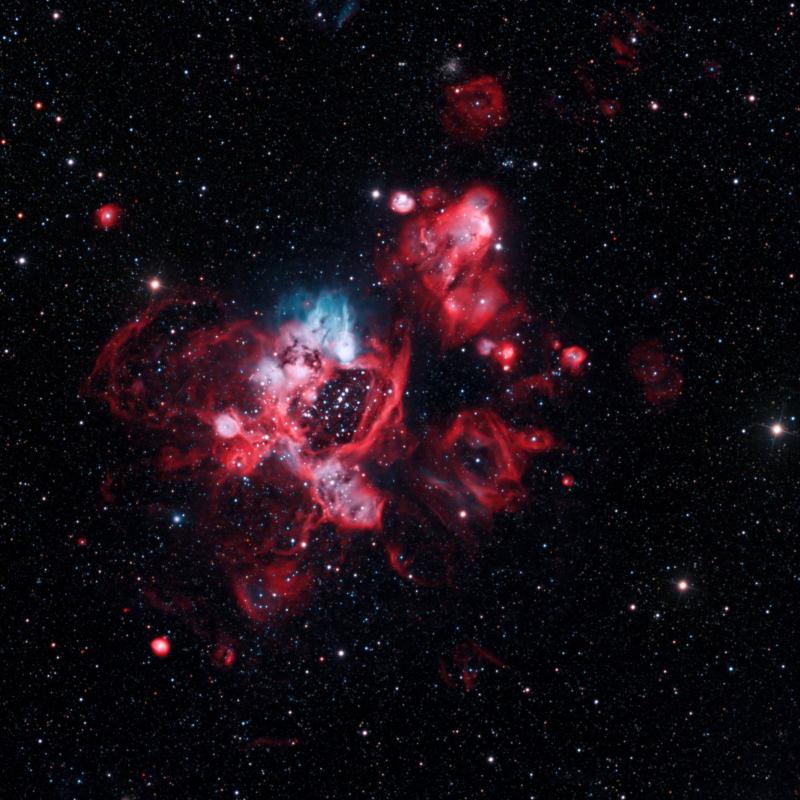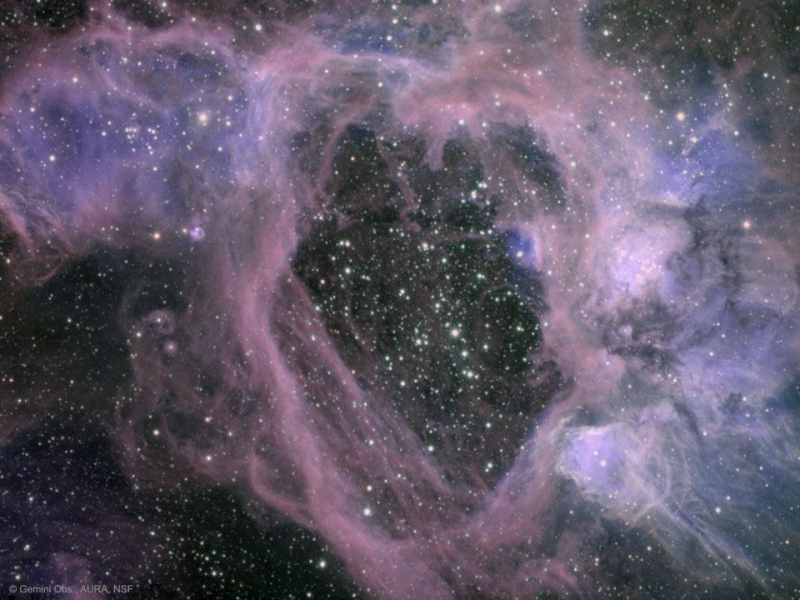N44 Nebula
The Hubble Space Telescope's image of the N44 nebula, which is part of the Large Magellanic Cloud, is extremely lovely to look at, but what's more significant are the cosmic phenomena that help to create its breathtaking beauty. There is currently no single explanation for why N44 has a large hole in it, however stellar winds from big stars and a supernova remnant have both been proposed as possibilities. The titular super bubble spans over 250 light-years.
Many of the stars that have sculpted N44 and contributed to its fluctuating density may someday explode as supernovae. This variable density is most likely the result of earlier supernovae in the area. The fact that N44 emits x-rays adds more evidence to the consequences of supernovae in the past.
Because of the huge areas of ionized hydrogen it contains, N44 is categorized as an emission nebula. The nebula's three strongest emission lines, however, are produced by neutral hydrogen atoms, which emit the hydrogen-alpha line at a red wavelength of 656.2 nm, doubly-ionized oxygen atoms, which emit at a blue-green wavelength of 500.7 nm, and singly ionized oxygen atoms, which emit at an ultraviolet wavelength of 372.7 nm.












